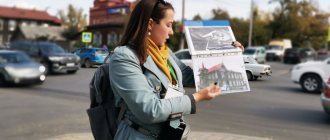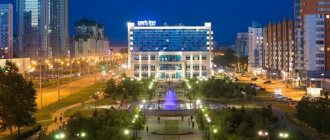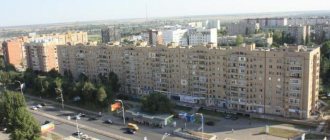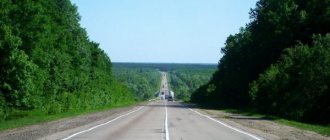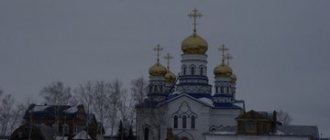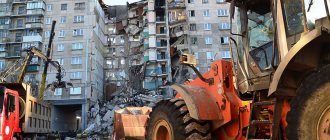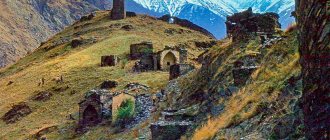Self-guided walking route around Grozny
Have you come to Grozny for 1 day or even a few hours? It doesn’t matter, if you plan your walking route wisely, you can see all the most interesting things in the Chechen capital. The city is compact and attractions are located nearby.
It is very convenient to start your walking route in the center of Grozny, near a flowering park - the railway and bus stations are nearby. There is also ample free parking nearby for travelers by car.
Flower Park
© Julia Alisova
So, Flower Park . This popular urban space is very young, like almost everything in Grozny. The park opened in 2021, and since then it has only become more beautiful.
The park's area is large, about 5 hectares, and it takes time to walk around. The well-groomed alleys are “covered” with metal installations with a variety of colors - there are hundreds of thousands of them here.
Along the alleys of the park you will find “living” green figures, kiosks with drinks, open cafes, children’s attractions, and souvenir shops. Both adults and children will enjoy it here.
Take a photo of the impressive skyscrapers of the Grozny City complex in a flower “frame”, and move on. Walking through the park, you will notice a beautiful Orthodox church.
This is the Church of the Archangel Michael, one of the oldest buildings in modern Grozny. The church was founded at the end of the 19th century; later it was reconstructed, and today it is open to the public as a functioning temple.
From old to super-modern. Where else to go in fashionable Grozny but to stroll through the skyscraper district. Beautiful “glasses” welcome guests - there is a hotel, restaurants, cafes, shops, an observation deck, just a great location for photo shoots. The complex consists of 7 towers, their maximum height is 40 floors.
Be sure to go up to the observation deck on the roof of one of the skyscrapers to appreciate Grozny from above. You can drink coffee in a trendy bar, or go further - crossing the road, you will come to the embankment of the Sunzha River . The embankment of the Sunzha River is a new pleasant urban space. There are comfortable paths along the river, flower beds, and recreation and picnic areas. You can go down to the river, or relax on a hot day in the shade of the trees.
Mosque "Heart of Chechnya"
© Igor Butyrskii
The embankment also offers first-class views of the city, the skyscrapers of Grozny City and, of course, the elegant “Heart of Chechnya” mosque.
“The Heart of Chechnya” is a sacred symbol, a tourist “business card”, a center of attraction for both Grozny residents and city guests. And also one of the largest and most beautiful mosques in Russia and Europe.
On holidays, she can meet up to 10,000 parishioners. However, entry for representatives of any religion is allowed - come in, look, take pictures. There is only one rule: to visit an Islamic temple, a strict dress code is required, for men and women.
What should you pay attention to besides elegant architectural lines? Of course, to the rich interior decoration of the temple. Beautiful painted ceilings, suras from the Koran written in gold, soft carpets, incredible chandeliers - there are 36 of them in total, they are made of gold mosaics and Swarovski crystals. All this luxury makes an unforgettable impression.
To recover a little from the beauty that has befallen you, take a walk along the modern streets. For example, along Putin Avenue - taking photos with signs with the address has become a favorite pastime of Russian tourists. On the central avenue of the Chechen capital you will find interesting houses (some with history), buildings of the republic's administration, cafes, hotels, even hostels. If you have always dreamed of living on a street named after the Russian president, this is an excellent choice.
National Museum of the Chechen Republic
© Igor Butyrskii
On the avenue it is impossible to miss the spectacular structure, stylized with four defensive medieval towers. This is the National Museum of the Chechen Republic.
The collection of the main museum of the republic began to be collected about a hundred years ago. Formed from a very small collection, the museum gradually grew to become first regional, then republican.
Nowadays, museum repositories contain real masterpieces, such as paintings by Aivazovsky, medieval military uniforms, jewelry and numismatic collections.
A walk through the museum will be an excellent end to your route around the Chechen capital. However, you can stop by one of the cafes nearby - have a snack, relax, and share your emotions with friends.
Read more: What to see in Grozny in 1 day
Story
In 1801-1810, Georgia became part of Russia, and in 1803-1813 - Northern Azerbaijan (according to the Treaty of Gulistan). But these lands were separated from the main territory of Russia by the Caucasus Mountains, inhabited by warlike mountain peoples who raided lands that recognized Russian rule and interfered with relations with Transcaucasia.
After the end of the wars in Europe against Napoleonic France, the government of Alexander I was able to intensify its actions in the Caucasus, concentrating significant military resources there. In 1816, General Alexey Ermolov was appointed commander of the Separate Georgian Corps and manager of the civilian unit in Georgia, Astrakhan and Caucasus provinces. He proposed a plan for the conquest of the mountainous Caucasus, which included abandoning the tactics of punitive expeditions in favor of a regular siege of mountainous areas by cutting wide clearings in the forests, laying roads and creating defensive lines of outposts and fortresses. Hostile villages were to be destroyed, burned to the ground, and the population was to be resettled to the plain under the supervision of Russian troops.
There were two centers of resistance in the Caucasus: in the east of the Georgian Military Road - Chechnya and Mountain Dagestan, in the west - the Abkhazians and Circassians. In the center of the Caucasus Mountains lived peoples loyal to Russia - Ossetians and Ingush.
In 1817, Ermolov began advancing the left flank of the Caucasian Line to the south - from the Terek River to Sunzha, forming the Sunzha Line. In October 1817, the Nazran redoubt, built back in 1809 near Ingush villages, was strengthened, and the Pregradny Stan fortification was laid in the middle reaches of the Sunzha. In 1818, the Grozny fortress was founded in the lower reaches of the Sunzha. The fortresses of Vnezapnaya (1819) and Burnaya (1821) became a continuation of the Sunzha fortified line.
Fortress
The Grozny fortress was founded on June 22, 1818 on the site of the destroyed Chechen villages of Kuli-Yurt, Staraya Sunzha, Alkhan-Chu, Jima-Chechan and Solzha-Yurt (on the territory of present-day Grozny there were up to 20 Chechen villages that were destroyed by the troops of General Ermolov). The chosen place was located 6 versts from the entrance to the Khankala gorge (Khan-Kale tract) - a gorge between two low ridges, which was considered impregnable. The fortress was designed to block the Chechen highlanders from entering the plain through the Khankala Gorge.
Five thousand Russian soldiers built the fortress in 4 months. This place was then considered the “hottest” spot in the North Caucasus, which is why the fortress was called Grozny. The fortress was a regular hexagon, surrounded by a moat 20 meters wide. Each corner of the hexagon was a bastion on which guns stood.
Already by 1825, a suburb settled near the fortress, which, however, was poorly defended. In July 1825, an uprising broke out in Chechnya. The highlanders, led by Bey-Bulat, captured the Amaradzhiyurt post (Ammir-Adja-Yurt) and tried to take the fortresses of Gerzel and Grozny. However, in 1826 the Bey-Bulat uprising was suppressed.
In 1840, Lieutenant of the Tengin Infantry Regiment Mikhail Lermontov served in the fortress.
In October 1850, the heir to the Russian throne, 32-year-old Alexander Nikolaevich, visited the fortress. In honor of his arrival, the “Red Gate” appeared in the fortress.
In 1851-1854, the young Leo Tolstoy, who served in the Caucasus, visited the fortress several times.
With the end of hostilities in Chechnya in 1859, the governor of the Caucasus, Baryatinsky, ordered the organization of two fairs in Grozny from 1860 - spring and autumn. In 1860, by decree of Emperor Alexander II, the Terek region was formed. A “military-people’s administration” was created in the region, which was characterized by a separate administration system for civilian, Cossack and mountain administration.
City
By 1870, the fortress had lost its strategic importance and was transformed into a district town of the Terek region.
In the early 1890s, oil production began in the city area. At the same time, the need for a railway arose. The branch of the Vladikavkaz railway, laid from Beslan, appeared in Grozny on May 1, 1893, and on October 6 of the same year the first oil well was drilled.
Grozny has become one of the largest industrial centers in the Caucasus
Revolution and years of civil war
After the victory of the February Revolution in March 1917, the Civil Committee, an organ of the Provisional Government, was created in Grozny, the Grozny Council of Workers', Soldiers' and Cossacks' Deputies was formed, and the Chechen Congress was held, at which the "Chechen National Council" was elected.
On November 8, 1917, Soviet power was established.
In December 1917, the Chechen Council, led by Tapa Chermoev, presented an ultimatum to the Grozny Council of Workers' Deputies demanding the disarmament of workers and revolutionary soldiers. After this, Chechen units of the “Wild Division” captured the city. The Provisional Terek-Dagestan government was formed.
In January 1918, Red Army troops arriving from Mozdok captured Grozny. Power passed into the hands of the Military Revolutionary Committee.
On April 2, 1918, troops of the Caucasian Volunteer Army of General P. N. Wrangel entered the city.
In 1920, units of the 11th Red Army seized power in Grozny. Chechnya and Ingushetia were included in the Mountain Autonomous Soviet Socialist Republic.
USSR
At the end of 1920 and the beginning of 1921, two new Soviet autonomies were organized in the foothills and mountainous regions of the North Caucasus with a predominant non-Russian population - the Dagestan Autonomous Soviet Socialist Republic and the Mountain Autonomous Soviet Socialist Republic. At the same time, the Mountain Autonomous Soviet Socialist Republic was divided into 7 national districts, one of which was the Chechen National District. The city of Grozny became its center.
In November 1922, the Chechen National Okrug was separated from the Mountain Autonomous Soviet Socialist Republic and transformed into the Chechen Autonomous Region. Grozny, however, was not part of the region and had the status of an autonomous city.
In 1926-1928, according to the design of the architect K. A. Dulin, a water supply was installed in Grozny.
On April 1, 1929, the city of Grozny, which had the status of an autonomous city within the North Caucasus region, was included in the Chechen Autonomous Okrug by a resolution of the All-Russian Central Executive Committee.
Since January 15, 1934, after the unification of the Chechen and Ingush Autonomous Okrug, Grozny has been the center of the Chechen-Ingush Autonomous Region, since December 5, 1936 the capital of the Chechen-Ingush Autonomous Soviet Socialist Republic.
In the summer of 1942, two army groups were formed from the German Army Group South: “A” and “B”. Army Group A was tasked with capturing the Grozny and Baku oil-bearing regions, and then seizing the oil fields of Iran and Iraq. Army Group B was aimed at Stalingrad. The failed offensive of the troops of the Southwestern Front from the Barvenkovsky ledge to Kharkov led to its defeat and to dire consequences in the south of the country. On July 23, 1942, German troops broke through the front near Rostov-on-Don. Within a month, the Germans captured Kuban. At the end of August 1942, Wehrmacht troops occupied Prokhladny, Nalchik, and Mozdok. On September 3, 1942, Kleist gave the order to the Mozdok group to attack Ordzhonikidze, and along the Prokhladny - Grozny railway line - to Grozny. However, the German troops failed to achieve the final goal set by Kleist - fierce battles for Grozny unfolded near Malgobek and Ordzhonikidze. The Wehrmacht troops made several attempts to break through the front in September, but were stopped and exhausted, and in October they themselves went on the defensive. On January 1, 1943, Soviet troops went on the offensive and the liberation of the North Caucasus from the Nazi invaders began.
When the Germans realized that they would not be able to take Grozny, on October 10-15, 1942, they bombed Grozny oil fields, oil storage facilities and oil refineries - oil fields were burning, Sunzha was burning from the oil products that spilled into it. The fires were extinguished within several days. In the shortest possible time, oil workers and power engineers restored the operability of industrial facilities - Grozny again began to supply the oil products so needed by the front and rear. In memory of the feat of Grozny firefighters in those days, a monument was erected in the Zavodsky district of the city (in front of the fire station) after the war.
On March 7, 1944, in connection with the deportation of Chechens and Ingush, the city became the center of the Grozny district as part of the Stavropol Territory, but already on March 22, 1944 it again received the status of the center of a separate region - the Grozny region, and on January 9, 1957, after rehabilitation Chechens and Ingush - the capital of the recreated Chechen Autonomous Soviet Socialist Republic.
At the end of August 1958, riots on ethnic grounds began in the city: a 22-year-old Russian worker was stabbed to death; and, as a result, there was indignation against the Chechens. Accusing government officials, participants in the unauthorized rally broke into the buildings of the regional committee of the CPSU, the KGB and the Ministry of Internal Affairs of the republic. The meeting resolution proposed:
- From August 27, 1958, rename the Chi ASSR into the Grozny region or into the Interethnic Soviet Socialist Republic.
- The Chechen-Ingush population is allowed to live in the Grozny region no more than 10% of the total population.
- Resettle advanced progressive Komsomol youth of various nationalities from other republics to develop the wealth of the Grozny region and to develop agriculture.
Demands were put forward for the arrival of the first secretary of the CPSU Central Committee, Nikita Sergeevich Khrushchev; Under the threat of violence, city telephone operators were forced to organize a connection for the rally activists with Khrushchev’s reception.
On the night of August 28, the rally was dispersed by military units, and its participants were later arrested and imprisoned.
After the collapse of the USSR
On October 1, 1991, the National Congress of the Chechen People under the leadership of Dzhokhar Dudayev announced the division of Checheno-Ingushetia into the sovereign Chechen Republic (capital - Grozny) and the Ingush Republic within the RSFSR. During the First Chechen War, there were battles around the building of the former Republican Committee of the Communist Party ("Presidential Palace") in Grozny, January 1995. At the end of 1994 and at the end of 1999, the city was stormed by Russian federal forces, and in August 1996 by the united forces of the Chechen Republic of Ichkeria. During these assaults, the city suffered greatly - it was practically destroyed; and the central area of the city was completely destroyed.
Road route from Grozny to the Chechen Republic
When you have seen all the most interesting things in the Chechen capital, it’s time to hit the road. Distances in the republic are very short, and in 1–2 days you can see a lot of sights. It is more convenient for these purposes to rent a car, or arrange a trip with a local guide. Start with the city of Argun, Grozny's closest neighbor.
Argun city
© Irina Porunova
You will get here along an excellent highway in just 15 minutes; such a short distance allows us to consider Argun a satellite city of Grozny. The town itself is nice, well-kept, cozy. It was rebuilt after the notorious events of the Chechen wars, according to the modern Chechen “scenario”. There is a business part of the City, comfortable residential areas, shops, tourist infrastructure, a park and a beautiful mosque.
It's worth paying closer attention to. Indeed, the mosque in Argun, called “Mother’s Heart,” is very unusual and even futuristic. It can be considered one of the tourist “business cards” of the Chechen Republic, and should definitely be included in your route.
The fashionable high-tech style, so unusual for Islamic sacred buildings, was proposed and brought to life by Turkish architects. With 50,000 light bulbs built into the carved metal dome, the mosque is a fantastic sight at night. The minarets are made in the form of obelisks, but the area around the mosque deserves special attention. Be sure to take a walk.
Next to the mosque is the Argun City . Together they make up an amazing spectacle - a combination of glass, metal, minarets and high-tech style. The high-rise buildings of Argun City are not as large as those in neighboring Grozny, but they also look very impressive. They house shops, offices, business centers, and apartments. You can come here for lunch or just take a photo with the beautiful shiny towers in the background.
Mosque "Pride of Muslims" in Shali
© Victor Bashkir
In addition to Argun, your route should include the town of Shali. It is also located nearby, you will be there in 30–40 minutes. This small city is home to an architectural masterpiece of modern architecture, the Pride of Muslims Mosque. By the way, this is the largest mosque in Europe. The shrine, together with the adjacent territory, can accommodate up to 100 thousand believers at a time.
However, not only Muslim believers can visit the mosque; “Pride of Muslims” is open to representatives of all faiths. Travelers are attracted to the mosque as an architectural object. White marble facades, gold paintings, elegant frescoes, expensive carpets. And also incredible huge chandeliers in the shape of tulip flowers attract with millions of lights. The “Pride of Muslims” mosque is incredibly beautiful both in its external and internal decoration. It will be a beautiful end to your Chechen vacation, which will be remembered for a long time.
Read more: What to see in Grozny in 2 days
About hotels
As for hotels, prices in Grozny are not particularly steep; even staying in the most expensive hotel in Grozny City costs around 7,000 rubles. per night for two, but I planned to see the city, so I lived in a small hotel with a decent rating on booking and a price of less than 2000 rubles. per night. When I checked into my room, the young Chechen at the reception asked if I was at work and was very surprised when he heard that I had just come for a walk and to see the city. He even asked if I was scared, which left me bewildered, but he clarified that many in Russia perceive the opportunity to fly to Chechnya with fear. In principle, among my acquaintances there are also a lot of people who twisted their fingers to their temples when I talked about my plans. I didn’t rent the hotel itself, but it’s worth the money, the only downside is its location, but more on that later.
Holidays with children in Grozny
Grozny is a great destination for a family holiday. This republic has a real cult of family and children, and on vacation with young travelers it will be not only interesting, but also comfortable. In Grozny there are children's entertainment centers, family hotels and restaurants, where everything is thought out for young tourists, as well as many places for walks in the fresh air. In the city center it is primarily the Flower Park .
Beautiful alleys, bright installations with flowers, open cafe terraces where it’s so nice to sit down with a glass of ice cream on a hot day. Kids will love playing with the “living” green sculptures, and concerts and entertainment shows are often held here.
There are many beautiful parks in the center of Grozny
© Igor Butyrskii
The park has sports and children's playgrounds, a small zoo, trampolines, labyrinths, carousels, and a mini-cinema. By the way, you can ride around the park, for example, on a funny musical train.
You can walk here until late; in the evening the beautiful illumination turns on. Another park is Mother's Glory Square. Children will like it no less, because in addition to walks, they will find rides, carousels, and rides in mini-cars. A Ferris wheel, swimming pools, and slides welcome guests in the warm season. You can also have a snack here, there are food stalls.
In the city park named after A. Kadyrov there is a zoo with many animals. Here you can admire the fountains, waterfalls, and relax in the cafeteria. Cool entertainment awaits you at the Like Lend , it is located on the top floor of the Grand Park shopping center in the center of Grozny.
Guests are greeted by animators in bright costumes; you can run in a maze, “plunge” into a dry pool, jump on trampolines and go down slides. Every evening, guests will enjoy an interactive musical show with the participation of magicians, dancers, and acrobats.
But the Grozny City shopping center attracts with the presence of several swimming pools in which you can splash around all year round, and a fun ice skating rink. In Grozny there is a Dolphinarium where you can watch shows by gifted artists. By the way, there is also a dino park, an amusement park, an autodrome, a zoo and a theater for young spectators. The complex has an equestrian club where you can learn to ride horses.
a circus tent comes to Grozny . In the evenings on weekends, Putin Avenue becomes completely pedestrian - children can run, jump, ride bicycles and scooters. And their parents take a leisurely stroll along the shady alleys and listen to a street concert of musicians, for example.
Entertaining
© AquaLand
Have you come to Grozny with the boys? Go to a football match at the Akhmat Arena stadium. You can also have a great time relaxing and having fun on the coast of the so-called Grozny Sea.
Guests can enjoy water adventures, a children's playground, and an entertainment center - there are 5 floors of a wide variety of entertainment. Water park, cinema, slot machines, trampoline and cable car. There are also beaches, separate swimming areas for women and men, and the baby can be with one of the parents.
Here you can ride a scooter or catamaran. You can order lunch in a cafe, or take food with you and have a great picnic in nature. This place is especially popular in summer and early autumn; residents of Grozny come to the coast in large groups.
About the urban environment
When booking an overnight stay in a city, I often focus on the distance to the attractions that interest me. It was also in Grozny, I figured that 2.5 km is half an hour of walking at a normal pace, so I considered this distance acceptable. However, there is something I didn't take into account. Firstly, it was still spring and it was getting dark outside early, so we often had to walk in the dark for those half an hour. And no, walking around Grozny at night is not dangerous, but it’s just that in the part of the city through which my route lay, the lighting was very bad, and in some places I had to walk using my phone to illuminate my way. Secondly, the weather was a little let down and it rained all day on Saturday, but, as it turned out, the further from the center, the fewer not only asphalt sidewalks, but also sidewalks in general. As a result, a theoretical half-hour night walk around the city sometimes turned out to be an obstacle course. Photos on the Internet usually give an inaccurate impression of the city; in fact, most of Grozny appears to be private houses, although the houses here are very decent. As a local taxi driver told me, Chechens build housing for the whole large family and for a long time, so do everything on a large scale and thoroughly. Of the interesting details in the private sector, I noted for myself the methods of throwing away garbage. The bags are hung on special hooks near the road, then they are collected by a garbage truck passing along the street.
The central part of Grozny is strikingly different from its main part, and Putin Avenue can easily be confused with a street in some European town.
Here you can already find smart bike paths that automatically count the number of cyclists, bins for separate waste collection and benches with built-in solar panels and phone chargers:
Recently they even invited street artists to paint graffiti on buildings, some of which look really cool, but I found myself at a time when most of the work was still unfinished. Personally, I think the coolest image is the three-dimensional tower on Kadyrov Avenue.
In fact, walking along two avenues, you are surprised how cool everything is here, from parks to workout grounds and modern football “boxes” for children:
Only then do you go a couple of blocks to the side and don’t understand how to normally cross the bridge over the Sunzha if there are no sidewalks or they suddenly disappear.
Holidays, festivals and cultural events in Grozny
Grozny, which is actively developing in recent years, has been striving to become not only a tourist, but also a cultural capital of the North Caucasus. Indeed, in this vibrant metropolis life is in full swing - theatrical performances, film premieres, national and secular festivals, religious holidays. Everything is celebrated cheerfully, noisily, on a grand scale and with Caucasian flavor!
New Year holidays in Grozny
© DK1974
The New Year holidays begin . If you come to Grozny in winter, you won’t go wrong. The weather here is usually mild, and the picture pleases the eye with illumination and New Year's elements.
Christmas trees are not removed until mid-January, and during this period guests also enjoy entertainment and sales in shopping centers.
Spring comes to Grozny along with International Women's Day . Also at the beginning of spring, an unusual “Honk-Fest” , a wild garlic festival, takes place in Grozny. If you have never tried this plant, come for a visit - they will teach you how to cook 1000 and one wild garlic dishes. The supply of vitamins and vitality is ensured.
The end of March marks Novruz , the Muslim spring holiday. Representatives of all religions are invited to attend - the more guests, the merrier.
The same principle is followed on the holidays of Eid al-Adha . It marks the end of fasting for Muslims, when beautiful tables are set, food is served, and guests are warmly welcomed. No less hospitable and fun at the gastronomic festival “Shashlyk-Mashlyk” . As a rule, it takes place in Grozny in May, on a huge square in the city center. It is impossible to make a mistake: the sounds of fiery musical motifs can be heard from afar.
Dancing at the Shashlyk-Mashlyk festival
© Julia Alisova
There are dances, performances by national groups, songs, and of course food. Lots and lots of food - chefs from all over the Caucasus and Russia will compete for the title of best kebab master.
In addition to the most varied barbecue, you can try other delicacies, as well as appreciate the national flavor. Each district of the Chechen Republic is represented by national farmsteads, with beautifully laid tables and a souvenir fair.
By the way, the organizers present “Shashlyk-Mashlyk” not only as a gastronomic festival, but also as a cultural and tourism festival.
If you come to Grozny in June, be sure to go to the mountain lake Kezenoy-Am for a unique event - the Children's Sailing Regatta . Snow-white sailboats gliding across the surface of the lake look very picturesque.
But in July, the international sailing regatta “Kozenoy-Am Cup” . This is an event of an all-Russian scale, and it is organized accordingly - transfer of guests, entertainment, accommodation, educational excursions are thought out perfectly.
In the fall, Grozny hosts the Festival of Culture and Sports of the Peoples of the North Caucasus. It features both traditional and very unusual competitions, such as stilt walking or belt wrestling. By the way, this is not only a sports, but a cultural platform. There you can get acquainted with different traditions and customs of the Caucasian peoples - it will be interesting.
Chechen Women's Day is celebrated annually in September . Another autumn holiday is City Day in Grozny. And this is an excellent reason to get to know Grozny!
Name
City name in Russian:
- 1818 - December 30, 1869 (new art - January 11, 1870) - Grozny fortress
- December 30, 1869 - the city of Grozny
- In Chechen: "Grozny".
Among the residents of the Chechen Republic, the colloquial name Solzh-Giala, which means “city of Sunzha,” is popular.
In 1998-1999, the administration of the unrecognized Chechen Republic of Ichkeria, which controls the city, renamed Grozny to Dzhokhar-Giala (city of Dzhokhar) in honor of the separatist leader Dzhokhar Dudayev.
In 2000, the Head of Chechnya, Akhmat Kadyrov, when there was talk about moving the capital to Gudermes, which was less destroyed by war, said that Grozny would remain the capital of Chechnya. According to him, “the entire history of Chechnya is closely connected with Grozny, and therefore the capital cannot be moved.”
In 2005, the Chechen parliament proposed renaming the city of Grozny to the city of Akhmadkala (Akhmad-Kala) in honor of the deceased president Akhmad-Khadzhi Kadyrov. The proposal was rejected by Ramzan Kadyrov.
